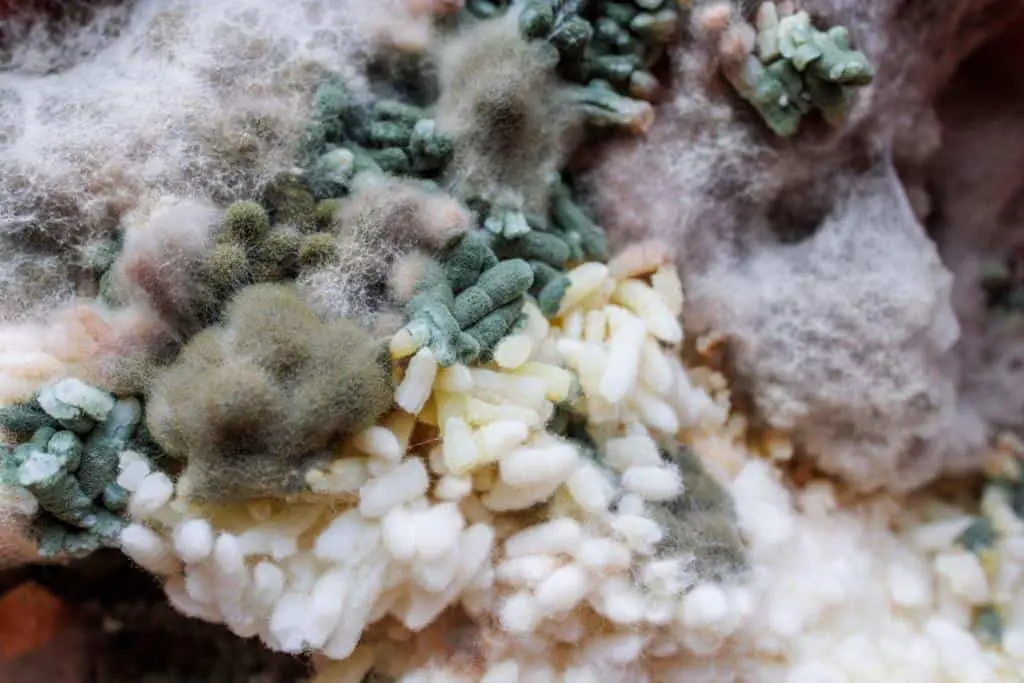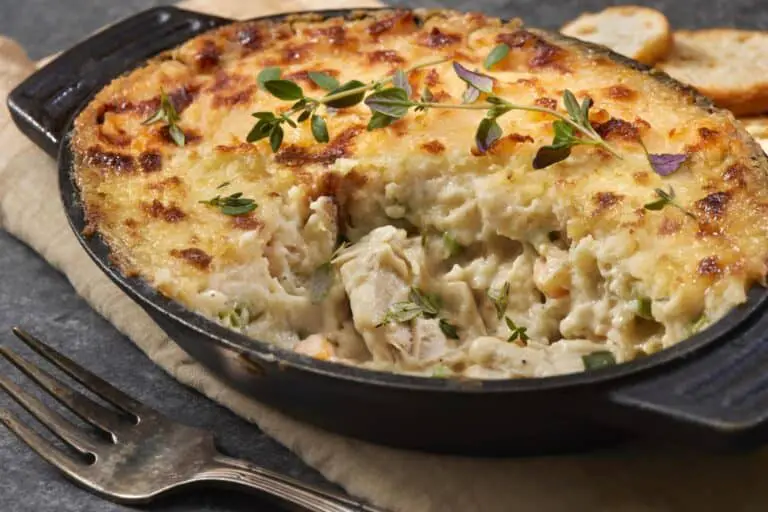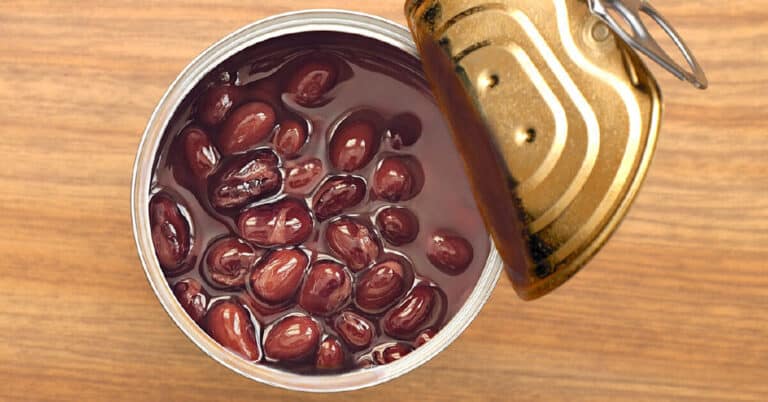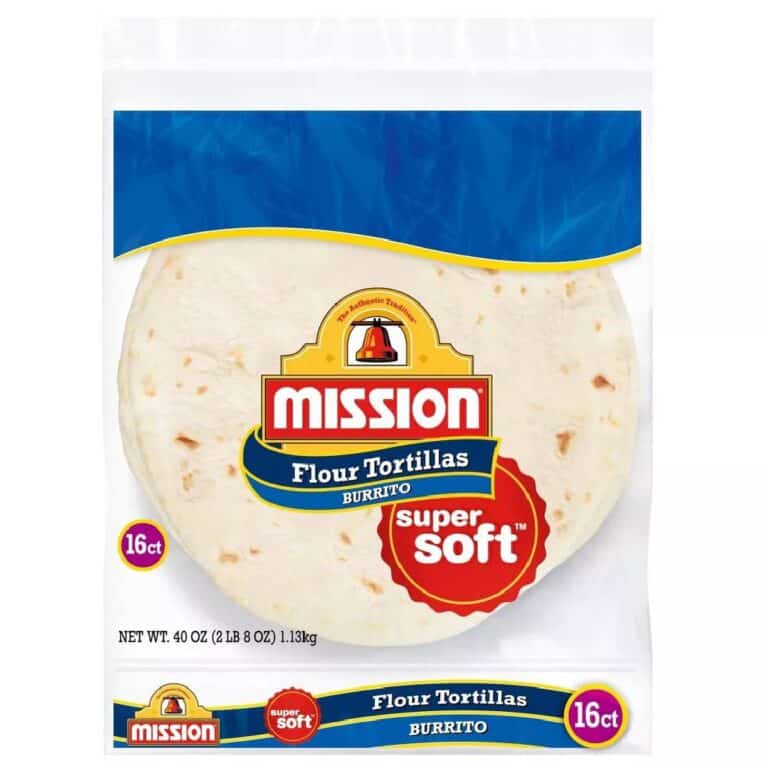White Mold on Rice: Is It Safe To Eat Moldy Rice? Explained for Beginner

Have you ever found some white mold growing on your leftover rice and wondered if it’s still safe to eat? One of the most common cooking mistakes is overestimating the amount of rice you will need and ending up with lots of leftovers. If you do not store your rice properly, you can end up with mold on the rice.
But don’t panic just yet—the answer might not be as black and white as you think. In this article, we’ll dive into the world of moldy rice and explore whether that pesky white mold is harmless or harmful.
We’ll also share some tips on how to prevent mold growth on your rice and what to do if you accidentally consume moldy rice. So sit tight, and let’s get to the bottom of this rice dilemma!
Does Rice Get Moldy?
Yes, both cooked and uncooked rice can get moldy if it is not stored properly or has expired. If your rice is exposed to any water that can make it moist, this moist environment will welcome mold to grow.
When rice is stored in a damp or humid environment, mold spores can easily settle on the grains and start to grow. Mold can cause rice to spoil and even produce harmful toxins that can make people sick. Therefore, it is important to take precautions to prevent the rice from getting moldy.
One of the best ways to prevent mold growth on rice is to store it properly. Rice should be stored in a cool, dry place, away from moisture and humidity. It is best to keep rice in an airtight container to prevent air and moisture from entering. If you live in a humid climate, it is important to use a dehumidifier or keep rice in a refrigerator to prevent mold growth.
Another way to prevent rice from getting moldy is to cook it properly. When rice is cooked, it should be thoroughly heated to kill any mold spores that may be present. It is also important to consume cooked rice within a few hours of cooking to prevent mold growth. If you have leftover rice, it should be stored in the refrigerator and consumed within two days.
Is It Safe To Eat Rice With Mold?

The short answer is no, it is not safe to eat rice with mold. If you see mold on your rice, it is best to throw it away immediately. The reason for this is that mold can produce mycotoxins, which are harmful substances that can cause a variety of health problems. Some mycotoxins are known to cause cancer, while others can cause neurological problems or liver damage.
Even if you only see a small amount of mold on your rice, it is best to err on the side of caution and not eat it. Mold can spread quickly, and even if it is only visible on the surface of the rice, there could be spores and toxins present throughout the grains. Cooking the rice will not necessarily make it safe to eat, as the heat may not destroy all of the toxins.
Can You Get Sick From Moldy Rice?
What happens if you eat moldy rice?
If you eat moldy rice, you can get very sick and develop food poisoning from the bad bacteria that has grown on the uncooked or cooked rice. This is due to the presence of Bacillus cereus, which can cause you to experience food poisoning symptoms.
Food poisoning can cause people to throw up, have diarrhea, feel sick, and have stomach cramps. Food poisoning can also lead to more serious illnesses.
What Causes Mold In Rice?
The growth of mold on rice is a common problem that can affect the quality and safety of the food. So, what causes mold in rice?
The most common cause of mold in rice is moisture. Rice is a highly absorbent food that can easily absorb moisture from the air or the environment in which it is stored. If rice is not stored properly in a dry and cool place, it can become moist and create an environment that is ideal for mold to grow. Additionally, rice that is cooked and left at room temperature for too long can also become moist and promote mold growth.
Another factor that can contribute to mold growth on rice is the presence of spores. Mold spores are microscopic particles that can be present in the air, on surfaces, or in the rice itself. If rice is exposed to mold spores, they can settle on the grains and begin to grow, creating visible mold on the rice.
Additionally, the age and quality of the rice can also contribute to mold growth. Older rice may be more prone to mold growth as it may have been stored improperly or for an extended period of time. Poor-quality rice may also contain more impurities and moisture that can contribute to mold growth.
How Do You Get Mold Out Of Rice?
Some people do actually clean the mold out of their uncooked rice by washing the rice in soapy water. People can soak the rice in either warm water or cold water to help clean off the mold from the rice. We would recommend that you throw the rice away if there are any signs of mold, as you can not be 100 percent sure that you have removed all traces of mold and dangerous bacteria from your food.
Types of Mold on Rice
The type of mold that grows on rice is called Aspergillus oryzae. It is a type of fungus. Aspergillus oryzae can make you ill if it is consumed.
1. Black Mold On Rice
Black mold is one of the most common molds that can grow on your rice. Another term for black bread mold is Rhizopus stolonifer.
Consuming any food that has black mold growing on it is very dangerous and can lead to serious illness.
2. White Mold On Rice
“White mold” is a term used for many kinds of mold that sit within different species of mold and always appear in a white shade. The specific species names are Aspergillus, Cladosporium, and Penicillium. White mold can sometimes appear in a gray shade and will grow rapidly if the food is moist.
It is important to keep your rice away from water, as this could help white mold grow rapidly.
3. Green Mold On Rice
Green mold on rice is very common. It will show as a fuzzy mold with a dark green color.
“Green mold” is used as a term for many kinds of mold that sit within different species of mold. Green mold commonly grows on carbohydrates such as bread and pasta. The green mold can also look like a powder. If you see any signs of green mold on your cooked or uncooked rice, you should discard it immediately.
Does Uncooked Rice Mold
Yes, dry, uncooked rice can actually begin to grow mold if it is stored in the wrong environment. Also, if it’s accidentally exposed to elements that will make it grow mold, such as water,
Dry, white, uncooked rice commonly has a shelf life of 2 years. It is very long-lasting and durable.
Brown, dry, uncooked rice is less durable and can last up to 6 months if not exposed to any dangerous elements.
There are signs that your rice has expired that you can look out for. These include looking to see if there is any hole in the packaging, any bugs in the rice, if the rice is damp and black marks, which are mold.
Accidentally Ate Moldy Rice
Accidentally eating moldy rice can be a cause for concern, as mold can produce harmful toxins that can cause health problems. If you realize that you have eaten moldy rice, there are a few things you can do to minimize the potential harm.
First, it is important to identify the type of mold that was present on the rice. If you are not sure what type of mold it is, it is best to err on the side of caution and assume that it is toxic. In general, any visible mold on food is a sign that it should not be consumed.
If you have only eaten a small amount of moldy rice, it is unlikely to cause serious health problems. However, you may experience symptoms such as nausea, vomiting, and diarrhea. These symptoms are your body’s way of trying to rid itself of the toxins that have been ingested.
WARNING
If you have eaten a large amount of moldy rice or are experiencing severe symptoms, it is important to seek medical attention immediately. In some cases, the toxins produced by mold can cause serious health problems, such as liver damage, neurological problems, or even cancer.
How To Spot Mold On Rice
What does mold look like on rice? There are a few ways to clearly and quickly tell if your rice has turned moldy. Here is a list of ways you can tell if mold has started to grow on your rice:
- The appearance: If you start to see some darker patches that are either a black or green shade this is the presence of mold. This mold can grow on cooked rice and rice that has not been cooked. If there is mold on your rice then it is spoiled and should not be used. If you start to see hair on your rice and what looks like white fluff similar to cotton candy then this is also mold. Mold can look very different depending on what kind of mold it is.
- The texture: If the texture of your cooked rice has begun to change then this could be a sign that your rice has turned bad and you should discard it immediately. When cooked rice dries out and becomes solid then this is a sign that you should not be eating the rice. Mold can start to grow after the rice has hardened.
- The smell: With any food, if the smell of your rice changes this is a big sign that your rice has gone off and will soon start to develop mold. An off smell can smell sour or just different to how your rice smelt before it has been stored. If the smell of your rice has changed or become noticeably unpleasant, you should not consume the cooked rice or rice that has not yet been cooked.






